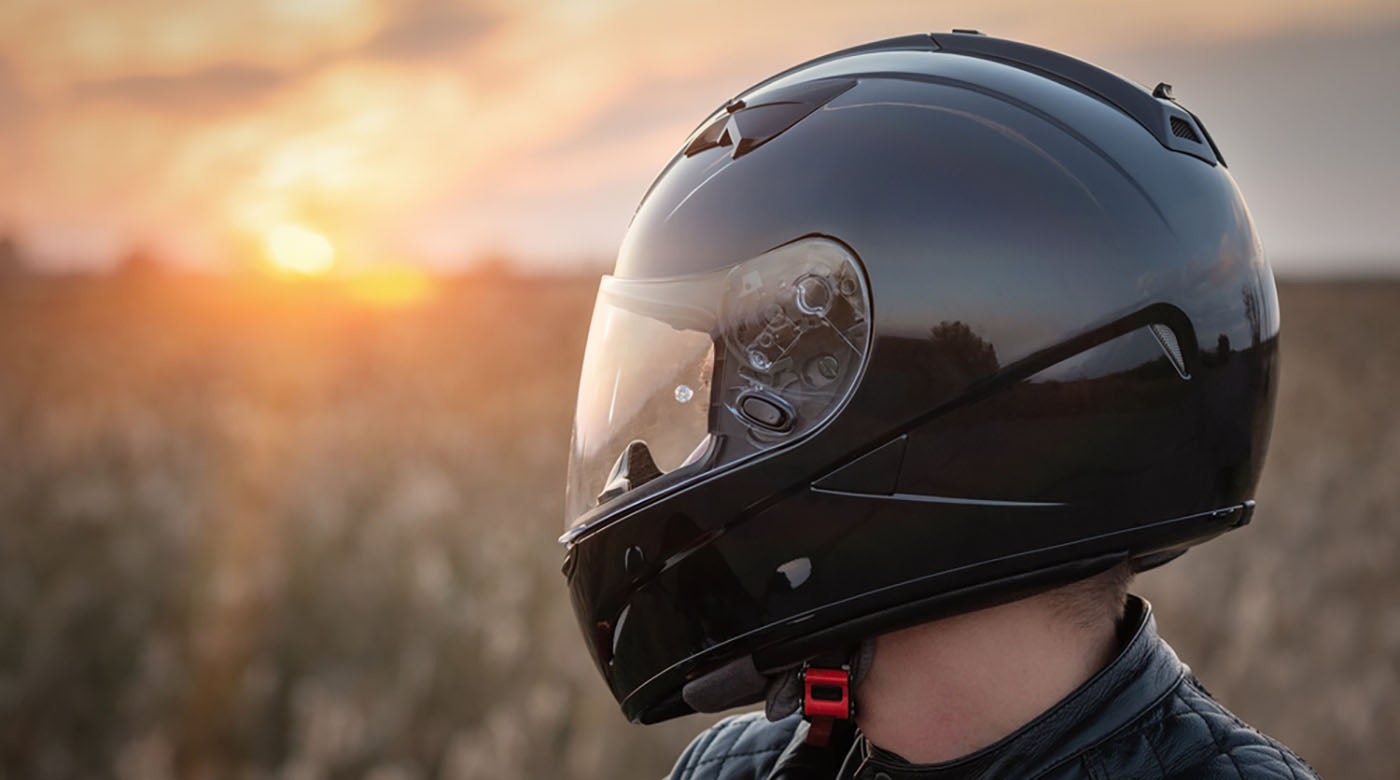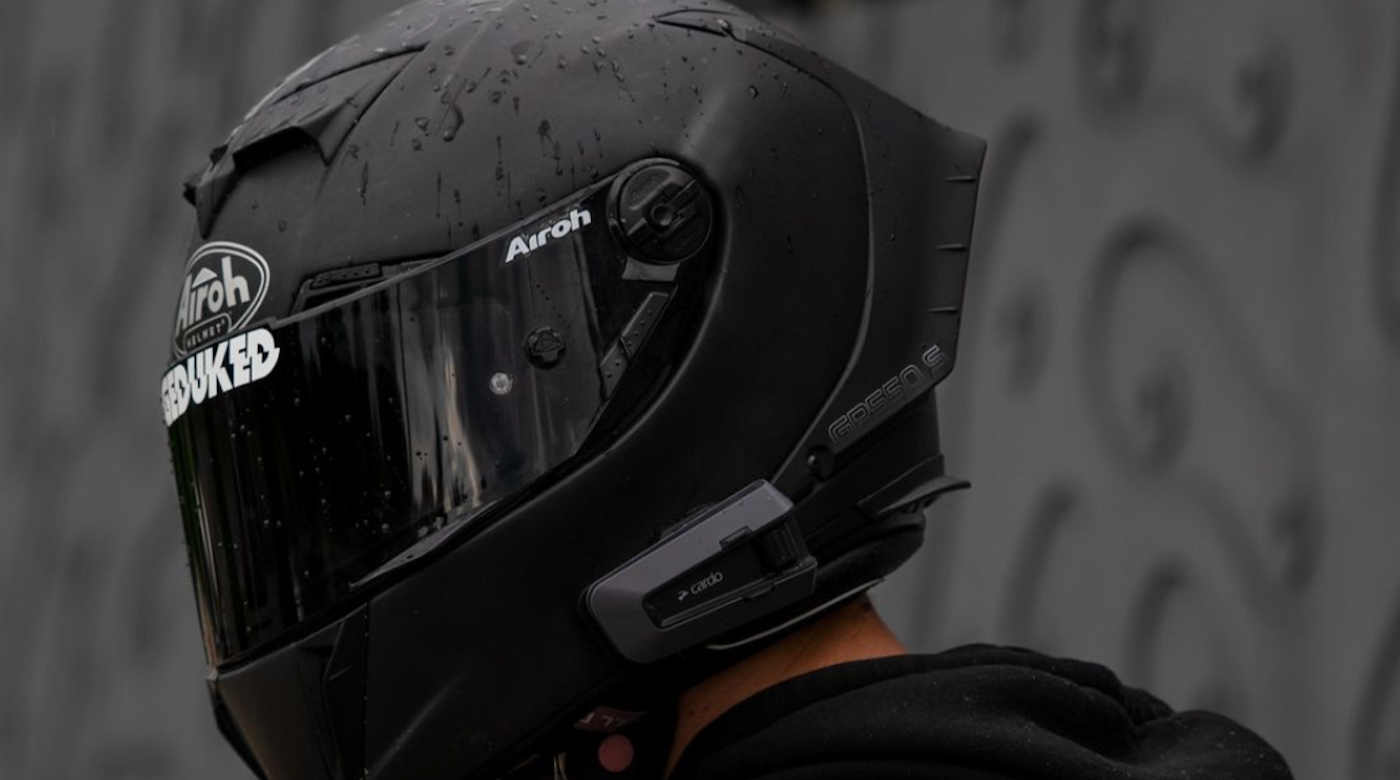Wearing a motorcycle helmet reduces your risk of injury by 88 percent. The law requires you to buckle up on every ride, but it doesn’t stipulate what kind of helmet you should wear. You can wear a full-face or half-face helmet, depending on your preferences, but the level of protection can affect rider comfort. Learn about the differences between a full-face vs. a half-face helmet to cover your head in whatever way works best for you.
Full-Face Helmets
Full-face helmets cover your entire head from the chin up to provide maximum protection. They have a short strap to secure it under the chin. The visor gives you a clear view of the road. The interior is often ventilated to let air pass over your face. Upgraded models have fog-resistant coatings to account for sudden changes in air temperature.
You can pair any full-face helmet with a motorcycle helmet Bluetooth headset to connect to your phone or GPS wirelessly and communicate with your companions or passengers instead of using hand signals. It uses Dynamic Mesh Communication to link up to 15 riders within range automatically and won’t disconnect when you change formation. Download and connect your headset to the Riser app to send automatic crash alerts in an emergency. It will notify the authorities if you can’t call for help.
Get the Packtalk Pro Today!Half-Face Helmets
Half-face helmets, or skull caps, only cover the top of your head, starting from above your ears. They prevent serious head injury in an accident but don’t protect your face from scrapes, collisions with obstacles and broken glass when another vehicle is involved. The strap connects to the helmet at four points and snaps together under your chin.

Source: F Armstrong Photography/Shutterstock.com
Wear goggles with a half-face helmet to shield your eyes from debris and glare. Put them on underneath your helmet. You can attach a Bluetooth motorcycle intercom to a half-face helmet using a half-helmet kit with an adjustable microphone to talk hands-free or connect to your electronics wirelessly.
Full-Face Helmets vs. Half-Face Helmets: Which One Is Right for You?
Full-face helmets offer more protection than half-face models because they cover more of your head. When ventilated, they are more comfortable than riding with a half-face helmet and goggles, which can cause chafing. However, there are many other factors to consider before choosing a specific helmet style.
Factors to Consider When Choosing a Helmet
- Temperature: A full-face helmet offers insulation from the wind and cold weather. If you ride year round, invest in a model with ventilation and space for a hat.
- Cost: Full-face models can cost twice as much as their half-face counterparts, but you can’t put a price on your safety.
- Durability: A higher price tag typically translates to a higher-quality helmet. Unibody full-face models are made with durable fiberglass, kevlar or polyethylene. Most helmets need to be replaced after five to seven years. Half-face models can be just as durable, but the strap can rip easily, and the padded foam insert can come loose.
- Comfort: Choosing between a full-face vs. half-face helmet essentially boils down to comfort. Some riders love to feel the wind on their face, while others don’t prefer having goggles tug at their face. You’re far more likely to wear the helmet if it makes you feel good.
- Visibility: Both options shouldn’t obstruct your view, but wearing goggles that don’t fit can disrupt your peripheral vision. If you wear glasses and don’t like contacts, you can request prescription goggles or wear a helmet with spectacle grooves to prevent them from rubbing against your face.

Motorcycle helmets, regardless of coverage, are essential. Full-face and half-face helmets have pros and cons, but both are effective at preventing fatal injuries. If it fits and keeps you comfortable, you can’t go wrong with either option. Ready to keep learning? Explore the differences between a modular vs. full-face helmet.
Learn More About Modular vs. Full Face Helmets Here




